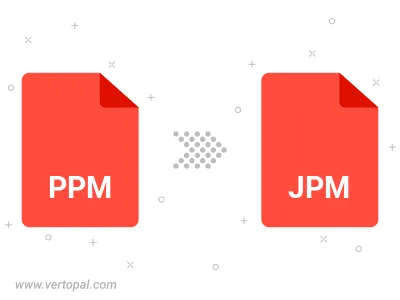Convert PPM to JPM
Convert PPM images to JPM format, edit and optimize images online and free.

The Portable Pixmap (PPM) file extension, an image format within the Netpbm family, stores simple, uncompressed images. Introduced in the late 1980s, PPM supports RGB color and grayscale images, making it suitable for basic image processing and conversion tasks. Its plain text encoding simplifies debugging and data manipulation, although its lack of compression results in larger file sizes compared to modern formats. As such, PPM finds limited use in contemporary applications, mainly in educational and experimental settings where ease of implementation and readability are prioritized.
The JPM file extension stands for JPEG 2000 Compound Image File Format. It is used for storing multiple images and graphics, incorporating JPEG 2000 compression to achieve high-quality visuals with reduced file sizes. JPM files are particularly useful in scenarios that require efficient storage and handling of complex image data, such as digital archiving, medical imaging, and document management. Developed as part of the broader JPEG 2000 standard, the JPM format was introduced to enhance image quality and compression over its predecessor, JPEG. Its support for transparency, layers, and metadata makes it a versatile choice in professional IT and imaging applications.
Choose any PPM image from your computer, or drag & drop a PPM file onto this page.
Use the tools available for converting PPM to JPM and click the Convert button.
When the conversion status changes to successful, click on the Download button to get the final JPM image.

To change PPM format to JPM, upload your PPM file to proceed to the preview page. Use any available tools if you want to edit and manipulate your PPM file. Click on the convert button and wait for the convert to complete. Download the converted JPM file afterward.
Follow steps below if you have installed Vertopal CLI on your macOS system.
cd to PPM file location or include path to your input file.Follow steps below if you have installed Vertopal CLI on your Windows system.
cd to PPM file location or include path to your input file.Follow steps below if you have installed Vertopal CLI on your Linux system.
cd to PPM file location or include path to your input file.